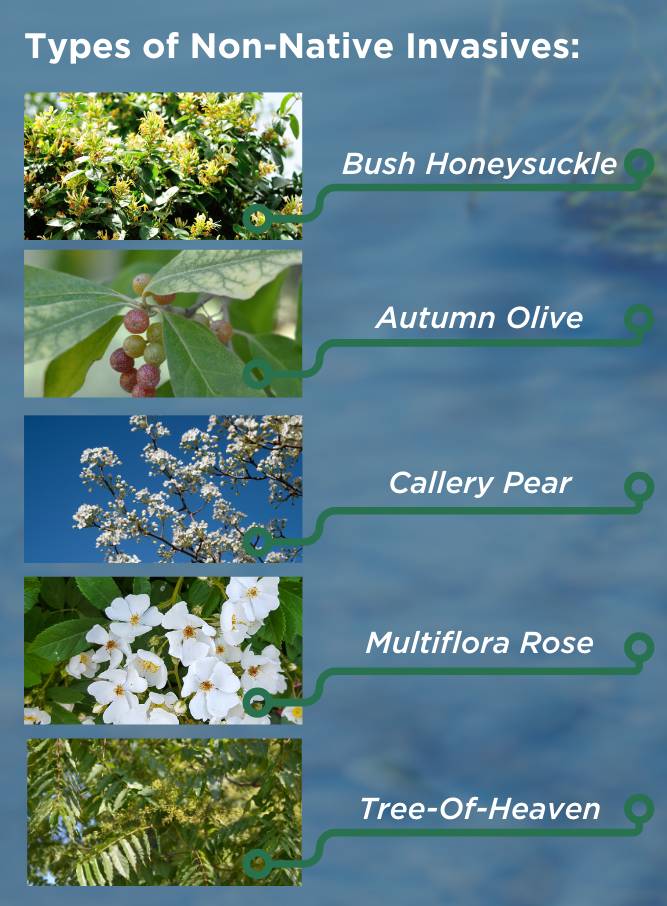Making the creeks more visible and accessible to the public and downtown visitors is a goal outlined in the Lebanon Downtown Master Plan. The biggest barrier against visibility and access to our stream corridors are non-native invasive plants that have overtaken southwest Ohio’s stream corridors and woodlands. Beginning later this year, the City plans to take action by investing in a large-scale, multi-year non-native invasive plant removal and treatment project.
The Lebanon Parks Department and volunteers have worked in the area around Harmon Park playground area. The plan is to expand these efforts to multiple other areas around the City including Cedar City Park, Berry Park and multiple areas of Harmon Park. Other areas including Colonial Park and the Lebanon Sports Complex will be treated in coming years.
.jpg)
Non-native is any plant not native to our area, generally from Asia or Europe. Non-native plants become invasive when they out compete our native plants by preventing or reducing their growth and spread rapidly. They can also grow easily in a wide variety of soil types, have no natural predators and produce prolific seeds. In this project, we are going to focus on woody stemmed non-native invasive plants. The most common woody stemmed non-native invasive species in this area are bush honeysuckle, autumn olive, callery pear, multi-flora rose and tree-of-heaven.

Workers will be cutting the invasive plants, chipping and spreading them back on the site. The only exception is tree-of-heaven; those will be treated with herbicide and left standing until they are dead and then removed. The cut stumps and regrowth will be treated with an herbicide appropriate for the site, meaning areas close to the stream will be treated with herbicide formulated for use in or near water. Herbicide will be applied by a licensed pesticide applicator. All native trees or shrubs will be left standing. There may be temporary area or trail closures for public safety while work is taking place. The estimated completion date for the project is May 2024.
Ongoing treatment of these sites is generally necessary. Even after the current plants are killed, there are already seeds in the soil that will grow new plants. Additionally, birds and other wildlife can bring new seeds into treated areas. This initial treatment will need to have follow-up work done every 3-5 years to maintain control. In areas that have little to no native trees or shrubs present, especially where erosion is a concern, the City will plant native trees and shrubs to help stabilize the soils.
Questions? Contact Casey Burdick 513-228-3104 or cburdick@lebanonohio.gov
Project Information